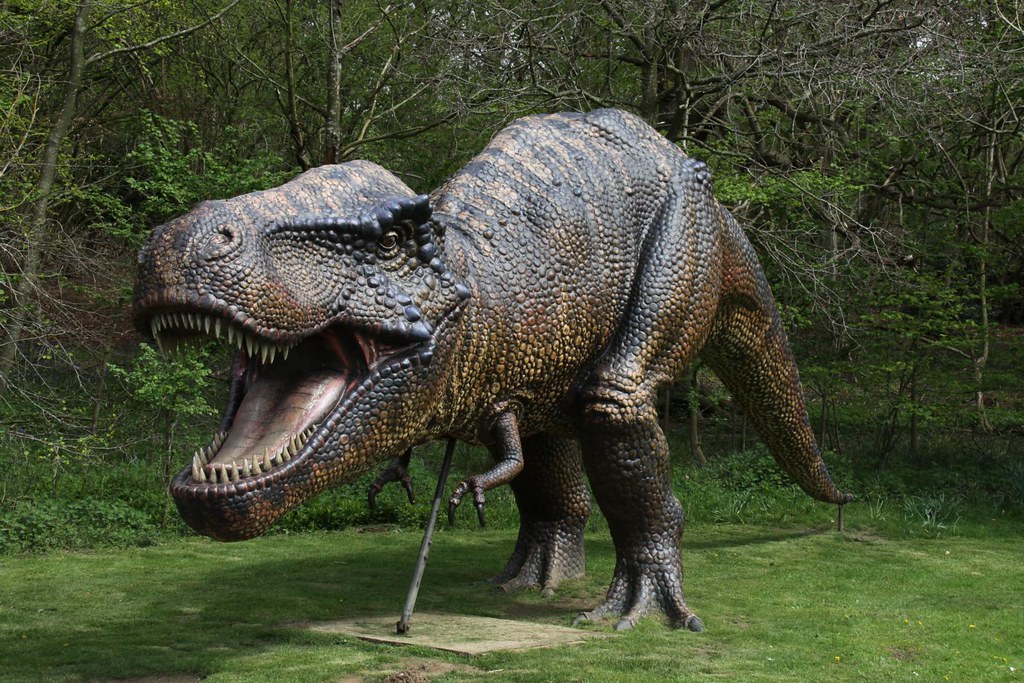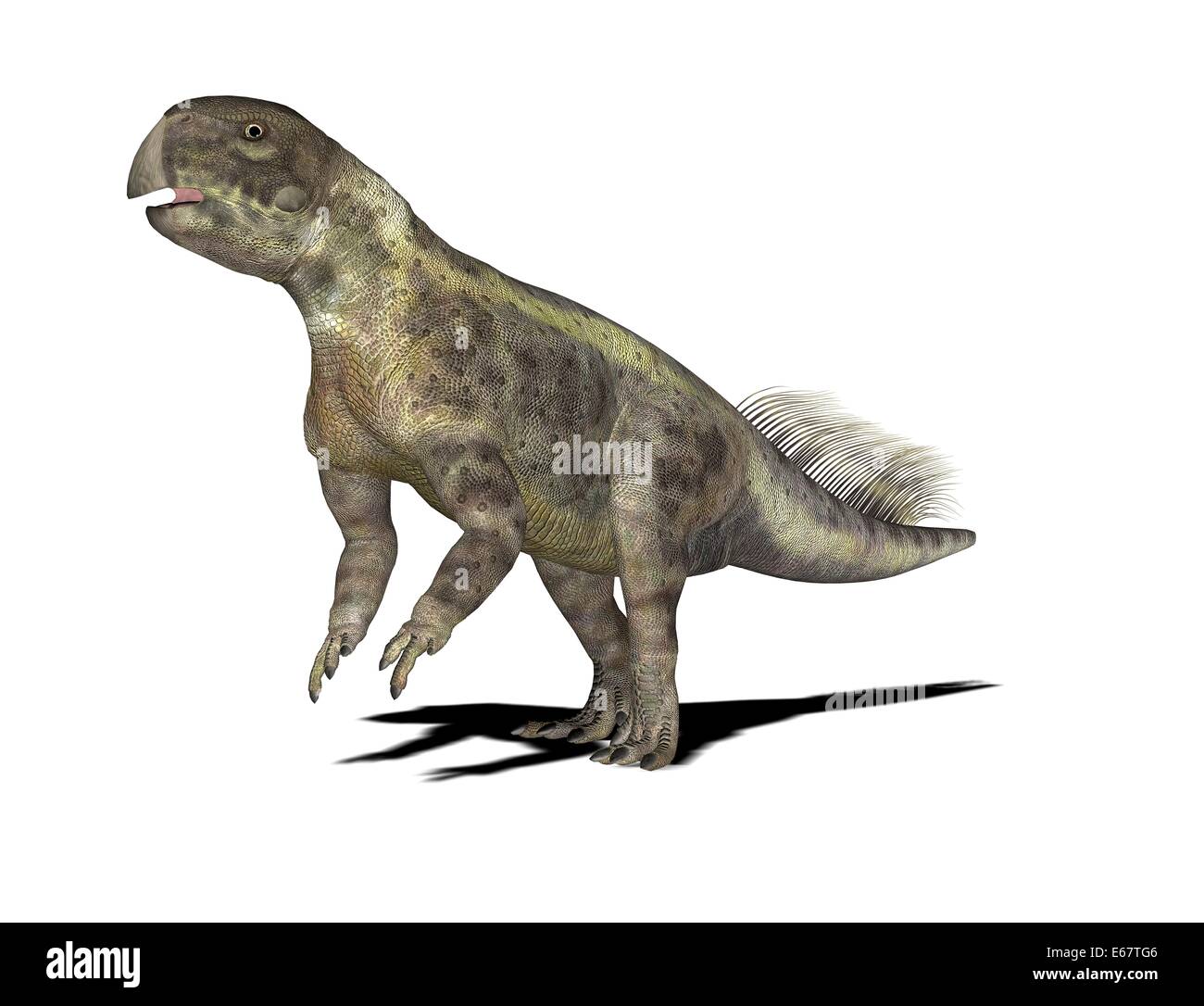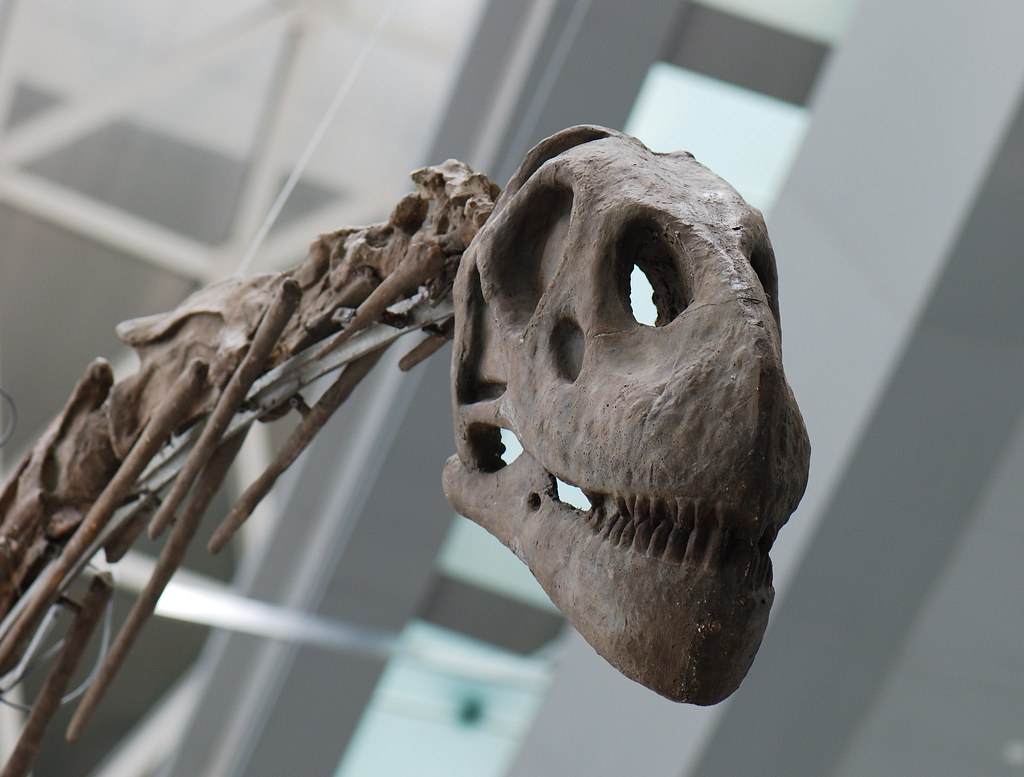
For generations, our understanding of dinosaurs was largely confined to their formidable skeletons – towering structures of bone that hinted at lives long extinct. Paleontologists meticulously pieced together these ancient puzzles, envisioning the creatures that once roamed our planet. However, a select few discoveries have transcended mere bone, offering something far more profound: windows into the soft, fragile aspects of dinosaur biology that typically vanish with time. These are the “dinosaur mummies” and their counterparts, specimens so perfectly preserved they challenge our very definition of a fossil, bringing the prehistoric world into breathtaking focus.
Imagine looking upon a creature that last drew breath over 100 million years ago, yet seeing its skin, its armor, even the pigments that once colored its scales. These exceptional fossils are not just scientific curiosities; they are time capsules, each offering unprecedented glimpses into the anatomy, coloration, behavior, and even the last meals of animals lost to deep time. They reveal a world far richer and more complex than skeletal remains alone could ever convey, compelling us to fundamentally alter our perceptions of these magnificent ancient beasts.
In this journey through deep time, we will explore some of the most astonishingly preserved dinosaur specimens ever unearthed. Each discovery has revolutionized paleontology, pushing the boundaries of what we thought was possible to learn from the fossil record. From armored giants retaining their intricate scales to feathered dromaeosaurs that blur the lines between dinosaur and bird, these incredible finds do more than merely inform; they ignite a sense of wonder, allowing us to connect with a lost world in a truly palpable way.
1. **Nodosaur Mummy (Borealopelta markmitchelli)**In 2011, deep within the Suncor Millennium Mine in Alberta, Canada, heavy-machine operator Shawn Funk unearthed an extraordinary relic. His backhoe struck what would become known as *Borealopelta markmitchelli*, a 110-million-year-old nodosaur, arguably the most spectacularly preserved dinosaur ever found. Unlike typical fossils consisting only of mineralized bones, this specimen retained its armor plating, skin, and even some internal organs in stunning three-dimensional form, offering an unprecedented, lifelike view of an ancient creature.
The preservation was so exceptional that researchers could analyze the pigmentation in its skin, revealing a reddish-brown coloration. This indicated the dinosaur likely employed countershading—darker on top, lighter underneath—a common camouflage strategy in modern animals, to blend into its forest environment. This 3,000-pound herbivore’s intact armored corpse, adorned with rows of bony plates and protective spikes, provided direct evidence that even these walking fortresses needed stealth to survive the dangerous predators of the Cretaceous.
Scientists believe *Borealopelta* died in a river, was swept out to sea, and quickly sank to the ocean floor. There, fine sediments rapidly entombed it, protecting it from decomposition and scavengers. The lack of body distortion suggests the carcass might have exploded upon reaching the seafloor, releasing gases that could have otherwise warped its form. Technician Mark Mitchell devoted over 7,000 hours to meticulously prepare this specimen, an effort honored by its species name, forever linking his dedication to this paleontological masterpiece. Its stomach contents also provided direct evidence of its diet, primarily ferns and conifers, and even suggested it browsed in recently burned forests.

2. **Dakota the Hadrosaur (Edmontosaurus)**In 1999, on his family’s North Dakota property, high school student Tyler Lyson discovered an exceptional hadrosaur specimen, affectionately nicknamed “Dakota.” This 67-million-year-old duck-billed dinosaur boasts extraordinary preservation, with large patches of fossilized skin and tendons still intact. This remarkable find provided a level of detail that would profoundly reshape our understanding of these widespread herbivores.
Using advanced imaging technology, scientists were able to study Dakota’s anatomy non-invasively. The results were startling: this hadrosaur possessed more powerful legs and was substantially more muscular than previously thought. This revelation challenged long-held assumptions about hadrosaur locomotion, suggesting they were faster and more agile than earlier reconstructions implied. The fossilized skin impressions further revealed a complex pattern of scales, varying in size across the body, with larger scales along the tail and smaller ones on the limbs, offering direct evidence of its external covering.
Dakota’s exceptional preservation stemmed from rapid burial and swift mineralization, which occurred before significant decomposition could take place. This process essentially created a natural body cast, locking the dinosaur’s intricate features in stone. This specimen, therefore, provides not just skeletal information but crucial insights into the musculature, skin texture, and potential agility of *Edmontosaurus*, offering a more dynamic and complete picture of its life in the Late Cretaceous.

3. **Feathered Microraptor (Microraptor gui)**From China’s Liaoning Province emerged *Microraptor gui*, a crow-sized dromaeosaur that lived approximately 120 million years ago, and one of the most complete feathered dinosaur specimens ever found. Its discovery fundamentally altered our perception of dinosaur evolution, presenting clear evidence of feathers not just on its forelimbs, but on all four limbs. This unique “four-winged” configuration ignited intense scientific debate and research into the origins of avian flight.
The exceptional preservation in the fine-grained lake sediments of the Jehol Biota allowed researchers to determine the original coloration of its feathers. Analyses revealed an iridescent black plumage, strikingly similar to modern crows and ravens. This discovery offered direct visual evidence of the vibrant, complex appearance of some non-avian dinosaurs, moving beyond guesswork to scientifically-backed color reconstructions. It also suggested that feathers served aesthetic and display functions, perhaps for mating or territorial defense, long before sustained flight evolved.
*Microraptor gui* has been pivotal in understanding the evolutionary link between dinosaurs and birds. Its detailed feather structures provided crucial comparative data, showing the continuum between dinosaurian and avian forms. This tiny dromaeosaur, frozen in time, transformed our mental image of these creatures from scaly reptiles to vibrant, feathered beings, showcasing the incredible diversity and adaptive brilliance of dinosaurs and how delicate structures can be preserved through rare geological luck.

4. **Leonardo the Brachylophosaurus**In 2000, in Montana, paleontologists unearthed a juvenile *Brachylophosaurus canadensis* dubbed “Leonardo,” after graffiti found nearby. This 77-million-year-old specimen ranks among the most complete dinosaur mummies ever discovered, retaining an astonishing 90% of its skin covering. Leonardo offers an unparalleled view of a hadrosaur’s external anatomy and provides remarkably rare insights into its internal biology.
What makes Leonardo truly unique is the preservation of its last meal within its stomach contents. Analysis revealed that this young herbivore’s final diet included ferns, conifers, and flowering plants, offering direct, concrete evidence of its feeding habits, rather than mere inference from tooth morphology. The detailed skin impressions across its body further illustrate the complexity of dinosaur integument, showcasing a varied pattern of tubercles and scales, crucial for reconstructing its precise appearance.
Scientists hypothesize that Leonardo’s exceptional preservation resulted from its death near a river, followed by rapid burial in sediment during a flood. This swift entombment prevented scavengers from disturbing the remains and protected delicate soft tissues from decomposition. The fine-grained sediments facilitated permineralization, transforming the organic material into stone while retaining its original form. Leonardo is thus a profound biological archive, offering a multifaceted understanding of a young hadrosaur, from its diet to its detailed skin texture.

5. **Scipionyx with Preserved Internal Organs**A truly groundbreaking discovery occurred in 1993 near Pietraroja, Italy, with the unearthing of *Scipionyx samniticus*. This small theropod dinosaur, merely the size of a chicken and only a few weeks old at its demise, became an unprecedented example of internal organ preservation in the fossil record. Affectionately nicknamed “Scipio,” it offered an almost unimaginable glimpse into the inner workings of a dinosaur.
Scipio’s fossil clearly displays traces of muscles, intestines, liver, and even the trachea, providing direct anatomical insights previously impossible to study. The level of detail allowed scientists to observe the attachment points of muscles to bones, offering unparalleled information about dinosaur musculature, physiology, and how these internal systems functioned in a living animal. This rare window into soft tissues fundamentally altered the study of theropod biology.
Researchers attribute this extraordinary preservation to the unique conditions of its burial. The young *Scipionyx* was rapidly entombed in fine-grained, oxygen-poor limestone sediments within what was once a lagoon environment. These anoxic conditions dramatically slowed bacterial decomposition, allowing delicate internal organs to mineralize before they could completely degrade. Scipio’s discovery therefore stands as a pivotal moment in paleontology, providing concrete data to support or challenge previous hypotheses about dinosaur internal anatomy and physiology.

6. **Psittacosaurus with Preserved Cloaca**A truly remarkable specimen of *Psittacosaurus*, a small ceratopsian dinosaur hailing from the Early Cretaceous period in China, has gifted scientists with an unprecedented look into dinosaur anatomy. Approximately 120 million years old, this fossil is not just a collection of bones but a rare window into the softer, more intimate structures of prehistoric life. It stands out for preserving the first-ever visible dinosaur cloaca, an all-purpose opening used for crucial biological functions like defecation, urination, and reproduction.
This extraordinary preservation of the cloaca has opened doors for extensive comparative studies, allowing paleontologists to draw fascinating parallels with the reproductive and excretory systems of modern reptiles and birds. Such a detailed anatomical insight moves beyond mere speculation, providing concrete evidence of how these fundamental biological processes might have functioned in dinosaurs. It offers a deeper understanding of their physiological makeup and their evolutionary relationships with today’s animal kingdom.
Beyond its unique internal structure, this *Psittacosaurus* specimen also retains intricate skin impressions and valuable pigmentation patterns across its body. These patterns clearly reveal the presence of countershading—a defense mechanism common in many modern animals, characterized by a darker coloration on the upper body and a lighter tone underneath. This camouflage technique likely helped the *Psittacosaurus* blend into its environment, evading the gaze of predators. Additionally, small, bristle-like structures along its tail suggest potential roles in display or sensory perception, adding another layer to our understanding of its behavior and communication.
Scientists attribute the exceptional preservation of this specimen to its rapid entombment in fine-grained lake sediments. These sediments, combined with an oxygen-poor environment, created ideal conditions that dramatically slowed decomposition. This allowed the delicate soft tissues and external features to mineralize and endure for millions of years, providing future generations with a snapshot of this ancient creature in exquisite detail.

7. **Tyrannosaurus Rex “Trix” with Skin Impressions**While some dinosaurs are preserved in their near-entirety, other specimens offer invaluable insights through even partial soft tissue preservation. A prime example is the *Tyrannosaurus rex* nicknamed “Trix,” unearthed in Montana in 2013. Though not as completely mummified as some other finds, Trix is an approximately 67-million-year-old specimen that boasts remarkable skin impressions, fundamentally reshaping our visual understanding of these apex predators.
These pivotal skin impressions revealed a truth contrary to many popular depictions: *T. rex* possessed small, pebbly scales across its body, rather than the larger, often reptilian-looking scutes that were frequently illustrated in earlier reconstructions. This discovery provided direct, empirical evidence of the tyrannosaur’s external covering, moving beyond artistic license to a scientifically grounded portrayal. It offers a more nuanced appreciation of their texture and appearance, suggesting a less heavily armored skin than previously imagined.
Beyond its skin, Trix stands as one of the most complete *T. rex* skeletons ever discovered, with roughly 80% of its bones recovered. This high degree of skeletal completeness, combined with the rare skin impressions, makes Trix an invaluable resource for paleontologists. The impressions themselves were preserved as natural molds within the surrounding sediment, enabling researchers to create casts that meticulously replicate the original texture of its skin, further enhancing our studies.
This iconic fossil currently resides at the Naturalis Biodiversity Center in the Netherlands, where it continues to serve as a cornerstone for research into tyrannosaur biology and evolution. Trix challenges and corrects long-held assumptions, providing an authentic glimpse into the formidable physical reality of one of Earth’s most legendary predators, prompting artists and scientists alike to revise their mental images of this magnificent beast.

8. **Zhenyuanlong with Complete Feather Impressions**From China’s prolific Liaoning Province emerges *Zhenyuanlong suni*, a discovery that dramatically expands our understanding of feathered dinosaurs. This dromaeosaur, a close relative of the famed *Velociraptor*, lived approximately 125 million years ago and reached a length of about 6.5 feet. What makes *Zhenyuanlong* truly exceptional is that it represents one of the largest dinosaurs yet found with clear, intact feather impressions across its entire body, providing breathtaking detail previously unseen in such a large specimen.
The level of preservation in *Zhenyuanlong* is so profound that researchers were able to observe complex wing feathers, meticulously arranged much like those of modern birds. This includes the primaries, secondaries, and coverts, showcasing a highly developed feather structure even though this dinosaur was not capable of flight. This revelation is crucial, demonstrating that intricate feather arrangements evolved much earlier than the capability for sustained aerial locomotion, suggesting that feathers served diverse functions beyond just flight.
Additionally, the specimen reveals long, fan-like feathers adorning its tail. These structures likely played a role in display, perhaps for attracting mates or signaling to rivals within its ancient ecosystem. Such detailed preservation of delicate integumentary structures offers profound insights into the evolution and varied functions of feathers in non-avian dinosaurs, painting a more colorful and dynamic picture of their prehistoric lives.
The fine-grained lake sediments of the Yixian Formation proved to be the perfect medium for capturing these exquisite details. This geological setting created an ideal environment where even the most delicate structures of the feathers were preserved in remarkable clarity. *Zhenyuanlong suni* thus provides compelling evidence that the lineage of dinosaurs leading to birds was far more feathered and avian-like than once imagined, further blurring the lines between these two distinct groups of animals.

9. **The Preservation Process Behind These Remarkable Fossils**The extraordinary preservation of these dinosaur specimens, often dubbed “dinosaur mummies,” is not a random occurrence but the result of a precise confluence of rare environmental factors. Paleontologists refer to this phenomenon as “exceptional preservation” or the creation of “conservation lagerstätten.” It requires a perfect storm of conditions immediately following an animal’s death, ensuring that its delicate features are captured in the geological record before they vanish.
Critical to this process is rapid burial, which acts as an immediate shield, protecting the carcass from scavengers and the destructive forces of weather and erosion. Simultaneously, an oxygen-poor (anoxic) environment is vital, as it drastically slows down the work of bacterial decomposition that would otherwise quickly break down soft tissues. These conditions, combined with fine-grained sediments, are the trifecta that allows for the capture of even the most minute details of an organism’s anatomy.
Furthermore, the intricate mechanisms of preservation often involve minerals infiltrating the tissues. This process, known as permineralization, essentially turns soft parts into stone by replacing organic molecules with more stable mineral compounds before complete decomposition can occur. The surrounding chemical environment also plays a crucial role; whether conditions are acidic or alkaline can influence which specific tissues are preserved and which degrade. Even the water chemistry, particularly the presence of certain minerals like pyrite or phosphate, can significantly enhance the preservation of soft tissues by facilitating this replacement process.
These exceptional fossilization conditions are exceedingly rare in nature. This scarcity explains why such well-preserved specimens, offering their invaluable biological insights, represent merely a tiny fraction of all the dinosaur fossils ever discovered. Each “dinosaur mummy” is, therefore, a geological lottery win, a precious time capsule providing information that ordinary bone fossils simply cannot.
Read more about: The Enduring Legacy: A Deep Dive into the Visionary World of Leonardo da Vinci’s Masterpieces and Mind

10. **How Modern Technology Enhances Our Study of Well-Preserved Specimens**In tandem with the extraordinary luck of fossilization, modern technological advancements have revolutionized the study of these exceptionally preserved specimens. These innovations allow researchers to extract an unprecedented amount of information without resorting to physically destructive traditional preparation methods, safeguarding these irreplaceable relics for future generations.
High-resolution CT scanning, for instance, enables paleontologists to peer into the internal structures of fossils without ever touching them. This non-invasive technique creates detailed three-dimensional models of soft tissues that might be encased deep within rock matrices, revealing anatomical complexities that would otherwise remain hidden. It’s like having X-ray vision, bringing the internal world of a dinosaur to life with stunning clarity.
Further pushing the boundaries, synchrotron radiation, which generates extremely bright X-rays, provides the capability to reveal the chemical compositions of fossilized tissues. This allows scientists to identify original organic compounds that have persisted for millions of years, offering biochemical clues about ancient life. Similarly, laser-stimulated fluorescence imaging makes otherwise invisible soft tissue structures, such as delicate feather filaments or complex skin patterns, brilliantly visible under specific light conditions, uncovering details imperceptible to the eye.
At the microscopic level, scanning electron microscopy allows scientists to examine fossil surfaces with incredible magnification. This technique helps detect minute cellular structures or even pigment-containing organelles called melanosomes, which provide direct evidence of an animal’s original coloration. Collectively, these non-destructive techniques have unlocked entirely new research avenues, allowing scientists to ask and answer questions about dinosaur biology and appearance that were simply impossible just a few decades ago, ushering in a new era of paleontological discovery.
**Windows into a Lost World**
These ten exceptionally preserved dinosaur fossils represent far more than mere scientific curiosities; they are profound time capsules that fling open windows into a world lost over 66 million years ago. Each remarkable specimen has compelled paleontologists to reconsider long-held assumptions about dinosaur appearance, physiology, and behavior. From the armored nodosaur with its unbelievably detailed skin and internal organs to the feathered dromaeosaurs that exquisitely blur the line between ancient reptiles and modern birds, these fossils bring ancient creatures to life with an immediacy and vividness that skeletal remains alone could never achieve.
As our technology advances with breathtaking speed and as new, astonishing specimens continue to emerge from the silent depths of the rock, our collective picture of dinosaurs constantly evolves, becoming ever more detailed, accurate, and awe-inspiring. These rare, precious glimpses of soft tissues, vibrant colors, and intricate structures serve as a powerful reminder that dinosaurs were not the monolithic movie monsters of our imagination but real, dynamic animals that lived, breathed, and thrived on Earth for an astounding 150 million years—a reign of success that makes our own species’ comparatively brief tenure on this planet seem but a fleeting whisper in the winds of deep time.



